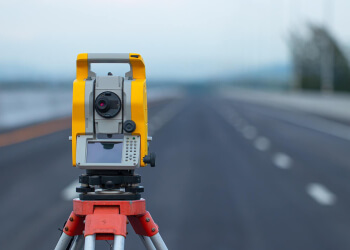Land Surveyors and RPRs - What are they? An Outsider's Perspectiv

As a newcomer to the land surveying industry, it is fascinating to uncover the intricate details of the hidden world happening in the background of the ever-changing real estate and construction world. In Calgary alone, there were more than 1700 houses sold in September, according to the Calgary Real Estate Board (CREB) and new homes are being built throughout the City every day. In order to sell or develop homes, land surveyors work tirelessly in the background. But what are they working on?
Role of a Land Surveyor
Land surveyors play a crucial role in the field of land management, real estate, and land development. They measure and map the Earth’s surface using specialized equipment to measure distances, angles, and elevations. Their work provides essential information for mapping, urban planning, and establishing property boundaries. These boundaries impact property values and facilitate the orderly development and functioning of a community. We, as a society, often take for granted the secure and reliable property lines and land titles system we have in Alberta. Only now, working in the industry and seeing some of the inner workings, do I realize there is a tremendous amount of experience, expertise, and rigorous execution of precise registrations that gives us this security. Land Surveyors are often seen staking out property or fence lines, or laying out the location of the new houses being built. I never really contemplated how often a surveyor needs to be involved in all these aspects of a property. The public most often sees the Land Surveyors' work and the data they generate in a Real Property Report (RPR) which is needed to improve or sell a home.
RPRs provide a comprehensive, visual representation of the improvements on the property, helping to identify any potential issues or discrepancies that may need to be addressed before a sale is finalized. Land surveyors note the location of all exterior sheds, fences, decks, retaining walls, etc. to ensure accurate representation of the home. Subsequently, municipalities then use the RPR to ensure compliance with by-laws and regulations as well as to address any potential encroachments into City or neighboring land. Once a municipality has stamped the RPR with their seal of approval, the home is ready to be handed off to their new owner.
In this hidden realm of measurements and boundary markings, land surveyors emerge as the stewards of precision and location, contributing immeasurably to the seamless functioning of the real estate ecosystem. The RPRs they create are the visual representation of many hours of effort in the field. As homes change hands, the steady work of Land Surveyors remains in the background, echoing through the foundation of every property and the communities they shape. In the short time that I have been in this industry, I have already learned a lot, and I am looking forward to understanding the nuances of this industry further.